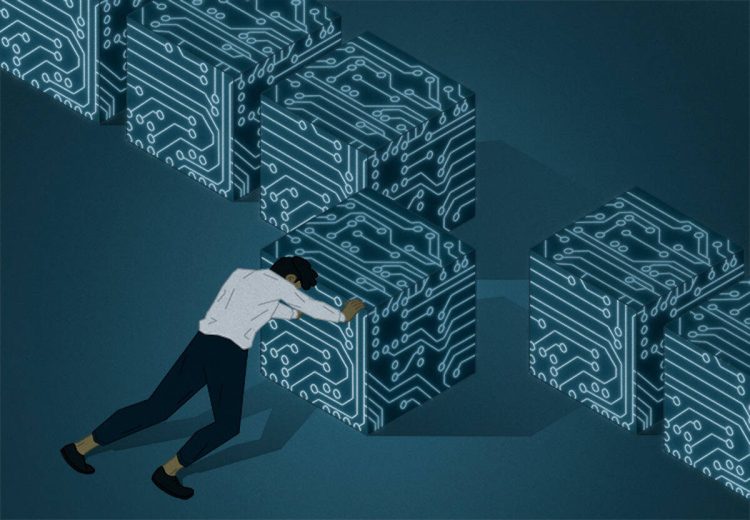Introduction
Despite its reputation for security, blockchain is not immune to vulnerabilities. While its decentralized architecture offers strong protection against traditional cyberattacks, real-world blockchain systems—from smart contracts to Layer 1 protocols—often contain critical flaws.
Security breaches in blockchain have led to billions of dollars in losses, caused reputational damage, and exposed fundamental weaknesses in how decentralized systems are designed and deployed. Understanding these risks—and how to prevent them—is essential for developers, users, enterprises, and investors alike.
This article explores the most common security vulnerabilities in blockchain systems and outlines best practices and strategies for preventing them.
1. Smart Contract Vulnerabilities
What It Is
Smart contracts are self-executing code on the blockchain. Once deployed, they are immutable—which means bugs cannot be patched easily. Exploits in smart contracts are among the most common and costly vulnerabilities.
Common Issues
- Reentrancy Attacks: Exploiting external calls to repeatedly interact with a contract before the state is updated (e.g., The DAO hack).
- Integer Overflows/Underflows: Arithmetic errors that can be manipulated.
- Unchecked External Calls: Calling untrusted contracts without verifying execution success.
- Front-running: Attackers manipulate transaction order for profit.
Prevention
- Use well-audited libraries (e.g., OpenZeppelin).
- Apply formal verification to mathematically prove contract correctness.
- Conduct independent security audits.
- Implement circuit breakers, timelocks, and upgradability patterns for critical contracts.
2. Private Key Management Failures
What It Is
Blockchain relies on public-private key cryptography. If a private key is compromised, an attacker can fully control an account or smart contract.
Risks
- Stolen or leaked private keys
- Poor wallet security (e.g., storing keys in plaintext)
- Social engineering or phishing
Prevention
- Use hardware wallets or secure enclaves for key storage.
- Implement multi-signature wallets to require multiple approvals.
- Train teams and users in phishing awareness.
- Rotate keys periodically and monitor for suspicious activity.
3. Consensus-Level Attacks
What It Is
Consensus algorithms (e.g., Proof of Work, Proof of Stake) can be targeted to disrupt or manipulate the network.
Types of Attacks
- 51% Attack: A malicious entity controls the majority of mining/staking power and can double-spend or halt confirmations.
- Selfish Mining: Withholding mined blocks to gain an advantage.
- Nothing-at-Stake: In PoS, validators vote on multiple chains without consequence.
Prevention
- Use robust consensus protocols with slashing penalties for bad behavior.
- Promote validator decentralization to reduce concentration risk.
- Regularly update and test protocol parameters under adversarial conditions.
4. Oracle Manipulation
What It Is
Oracles provide off-chain data (e.g., asset prices) to smart contracts. If an oracle is compromised, the smart contract can be tricked into making wrong decisions.
Examples
- DeFi protocols liquidating positions based on manipulated prices
- Stablecoins changing peg behavior due to false data
Prevention
- Use decentralized oracle networks (e.g., Chainlink, Band Protocol).
- Implement multi-source verification and median pricing.
- Add timelocks and thresholds for critical oracle updates.
5. Bridge Vulnerabilities
What It Is
Cross-chain bridges facilitate asset transfers between blockchains. These are complex systems with a large attack surface, and they’ve been responsible for some of the largest hacks in crypto history.
Examples
- Ronin Bridge hack (~$600M)
- Wormhole exploit (~$320M)
Risks
- Centralized validators or relayers
- Poorly written smart contracts managing asset locking/minting
- Delayed or insufficient monitoring
Prevention
- Use light clients or zero-knowledge proofs instead of trusted relayers.
- Conduct rigorous audits of all bridge components.
- Implement insurance funds or circuit breakers for large transfers.
6. Flash Loan Exploits
What It Is
Flash loans allow users to borrow large sums of assets without collateral, as long as they repay in the same transaction. Attackers use flash loans to manipulate prices, exploit logic flaws, or drain liquidity pools.
Examples
- Exploiting AMM pricing formulas (e.g., manipulating token ratios)
- Combining flash loans with oracle manipulation or reentrancy attacks
Prevention
- Limit dependency on on-chain price within a single transaction.
- Integrate price oracles with time-weighted averages (TWAPs).
- Add slippage controls, transaction caps, and rate limits.
7. Rug Pulls and Insider Exploits
What It Is
Projects with centralized control or hidden backdoors can be exploited by insiders or malicious developers to drain funds or abandon users.
Signs of Risk
- Centralized admin keys with unrestricted power
- Lack of third-party audits or public source code
- Anonymous teams with no accountability
Prevention
- Use multisig wallets for admin functions.
- Employ time-locked upgrades and community governance.
- Conduct diligent project research and verify open-source transparency.

8. Sybil Attacks
What It Is
A Sybil attack occurs when a single adversary creates many fake identities to gain undue influence in a network, especially in governance or reputation systems.
Impacted Systems
- DAOs and voting protocols
- Reputation-based access control
- Token airdrops and incentive programs
Prevention
- Implement proof-of-humanity or proof-of-personhood systems.
- Use staking or reputation weighting to raise the cost of influence.
- Apply rate-limiting and identity verification where necessary.
Best Practices for Blockchain Security
- Defense in Depth: Use multiple layers of protection—technical, procedural, and organizational.
- Formal Verification: Prove the correctness of code mathematically, especially for critical infrastructure.
- Continuous Auditing: Smart contracts, bridges, and oracles should be reviewed regularly by external experts.
- Bug Bounties: Encourage responsible disclosure by rewarding ethical hackers.
- Community Involvement: Open-source development invites broader scrutiny and fosters trust.
- Upgradeability with Care: If upgradeable contracts are used, control should be transparent and limited.
Conclusion
While blockchain systems promise decentralization and immutability, they are only as secure as their weakest link—be it a buggy smart contract, an insecure oracle, or a compromised private key. As the ecosystem grows, so do the stakes and the complexity of potential attacks.
By adopting a security-first mindset, leveraging best practices, and embracing transparency and collaboration, developers and organizations can build resilient blockchain applications that not only deliver on their promise—but also earn the trust of their users.
















































